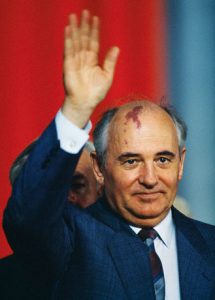Asia and OceaniaEuropeResolvedResolved
Fall of the Soviet Union- Background
The dissolution of the Soviet Union officially occurred in 1991, although it was a long time coming.
In December of 1991, the world watched in awe as the Soviet Union collapsed in to 15 separate countries. By the West, the collapse was hailed as a victory of freedom and democratic values over totalitarianism. Furthermore, it solidified the idea of the stark superiority of capitalism over socialism. The enemy of the United States was officially gone, and the Cold War had officially ended.
The Beginning of the End
How did the collapse come to be? The complex nuance of the whole situation needs to be understood with a formidable grasp of the events that led to its formation. The USSR was built on the territory of the Russian Empire. After the Bolshevik revolution of 1917, the new government in place developed and practiced a new form of socialism, which eventually transitioned to communism. The new Bolshevik unit was to be free of national differences, and aimed to create a monolithic, homogeneous state based on a centralized political and economic system. Eventually, the union progressed into complete totalitarianism wherein the communist leaders imposed total control of the country.

The unity of the state was, in fact, problematic. The underestimation of individual ethnic groups in the region by Soviet leadership resisted heavily to Russian assimilation of the state. These groups comprised over half of the population. Economic planning fell short of actual needs of the people, which resulted in an aggressive arms race with the United States. Communist ideals never actually took hold in the minds of the people, and eventually communist influence was lost among the general population.
Gorbachev and the Hope for Reform

Mikhail Gorbachev’s rise to power in 1985 came rife with economic and social stagnation. Gorbachev introduced a two-level reform policy; freedom of speech and economic reform known ad rebuilding. Gorbachev did not account for the pent up anger and aggression the citizens felt for generations, and the economic revival policy did not garner the immediate results that his campaign promised.
The proceeding disintegration of the USSR began in the non-Russian periphery in the Baltic region. This would eventually lead to a mass follow through with all other regions following suit.




2 Comments